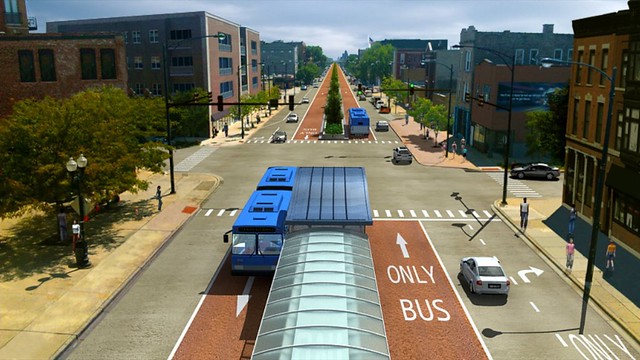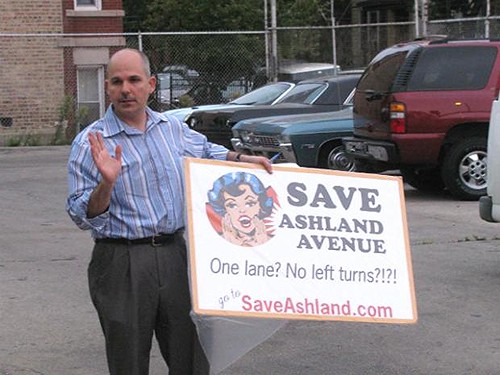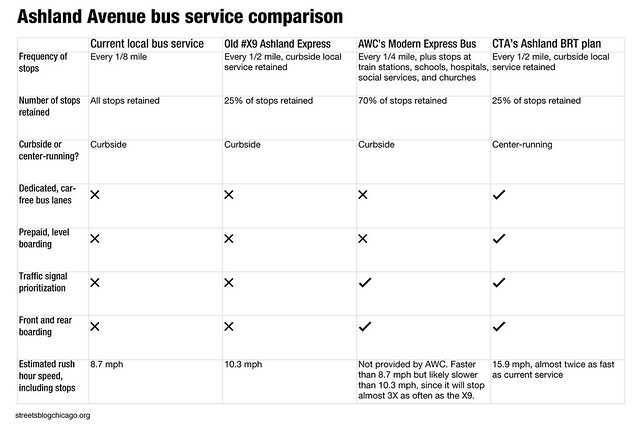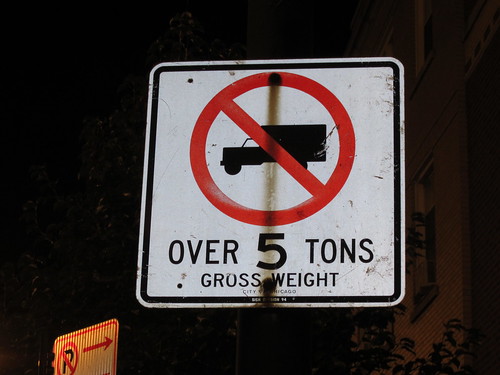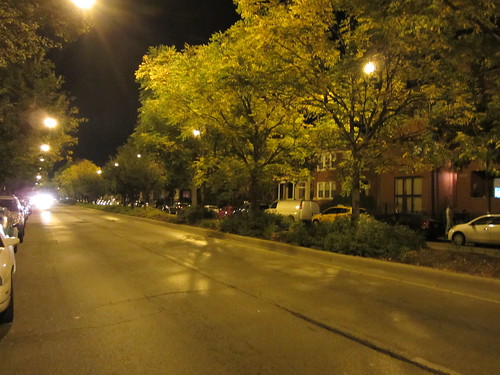Roger Romanelli, leader of the anti-bus rapid transit group the Ashland-Western Coalition, deserves credit for ingenuity. He’s always dreaming up new ideas for derailing the CTA’s plan to create fast, reliable transit on Ashland Avenue from 95th Street to Irving Park Road.
The AWC has already attracted residents and business owners along the project area who are worried about the conversion of travel lanes on Ashland to bus-only lanes, as well as the prohibition of most left turns. Now Romanelli is trying to bring another constituency into the fold: Ravenswood, Andersonville and Edgewater residents who want to see Ashland bus service extended north of Irving Park. As reported Friday in the Gazette, the coalition is hosting a community meeting on the subject on Wednesday, Nov. 20, at 6:30 p.m. at Andies Restaurant, 5253 North Clark Street in Andersonville.
This strategy may seem counter-intuitive, since the coalition is fighting against a project to improve Ashland bus service, but Romanelli has shrewdly chosen to fight fire with fire. As an alternative to BRT, which will nearly double the current 8.7 mph average rush hour speed of the #9 Ashland bus to 15.9 mph, the AWC has floated a counter-proposal dubbed “Modern Express Bus” service.
This would essentially involve bringing back the old #X9 Ashland Express bus, which, like BRT, only stopped every half mile, but crawled along at 10.3 mph because it got stuck in car traffic. The coalition is billing MEB as a cheaper alternative to the $160 million BRT plan, but their proposal includes numerous expensive bells and whistles, like installing heated shelters at every stop and hiring onboard “bus marshals,” and Romanelli has said he has no idea how much it would cost. The kicker is that, as outlined in the chart below, MEB would be even slower than the X9 because it would make almost three times as many stops, so the service would be anything but modern.
The one aspect of Romanelli’s proposal that may make sense is extending bus service 2.3 miles north of Irving Park to the junction of Ashland and Clark. In that respect, he’s on the same page as the forward-thinking Andersonville Development Corporation, although the ADC is advocating for expanding the BRT route, not the anemic MEB.
According to Kevin O'Malley, the CTA's general manager of strategic planning and policy, the CTA decided not to extend the BRT north of Irving Park on Ashland because it’s a residential section that doesn’t currently have bus service. “And when you get north of Irving, Clark Street [which has a bus line] starts to get very close [to Ashland],” he said. “So it would start to get kind of redundant.”
It’s also likely that any plan to add bus service to this stretch of Ashland would meet stiff resistance from some residents. Currently trucks over five tons gross weight are banned from this section due to concerns about noise, and worries about vibrations from heavy vehicles damaging building foundations. Earlier this year a Streetsblog reader who lives on this stretch posted a comment making the same arguments against introducing bus service. She didn’t seem to grasp that bus service would actually reduce noise, vibrations and pollution by getting cars off her street, or appreciate the potential convenience of having transit right outside her door.
When I recently walked this residential section around 9 p.m. on a Monday, the curbside parking spots were almost completely occupied, so there would likely be bitter opposition to eliminating spaces for curbside MEB bus stops. If these homeowners organize against the anti-BRT coalition’s proposal to add buses to their streets, it will certainly be amusing to observe the NIMBY-versus-NIMBY battle.
That’s probably an unlikely scenario, however, since Romanelli and his coalition are obviously a lot more interested in deep-sixing the CTA’s plan than actually doing anything to improve bus service. “Regardless of whether extending the #9 into Andersonville is a good idea or not, he is distracting from the watering down of BRT by building support for other bus improvements,” commented a Streetsblog reader this morning. It’s a clever strategy, so it’s important for real transit advocates to show up to the public meeting in Andersonville to make it clear that, whether or not the Ashland route is extended, it shouldn’t be diluted from robust BRT to weak-sauce MEB.
